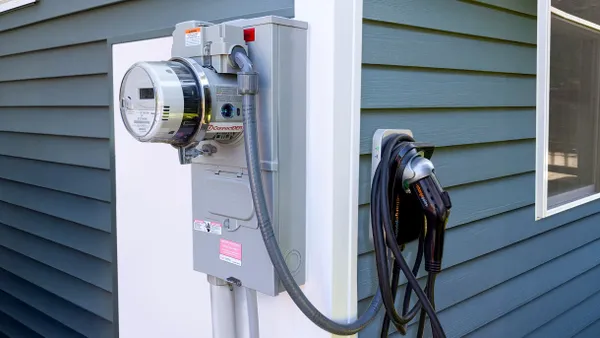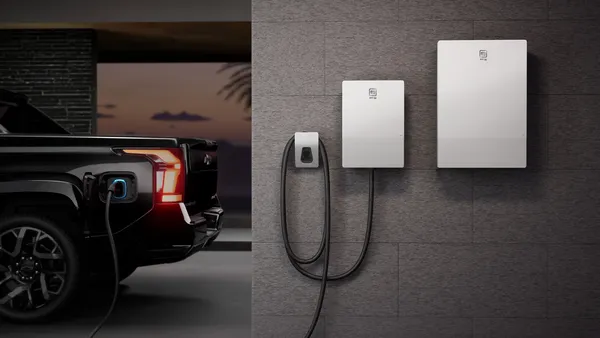Twenty years ago, everyone had a telephone connected to the outside world by a copper wire. Monthly bills were divided into charges for long distance and local calls. Now we pay for the speed of our data streaming. Yesterday’s telecoms are gone and a similar transition is happening in the energy space.
In the near future, consumers will not be paying per electron consumed; they will be paying utilities for infrastructure maintenance and energy services. Utilities are exploring new business models and diversifying their revenue streams by charging for services that extend beyond traditional electron delivery.
At the same time, utilities must also develop a foundational technology strategy to enable seamless interaction with consumers who are embracing the transformational promise of distributed energy resources (DER). DER growth challenges utilities, as they are now responsible for both managing power coming onto the grid while maintaining a reliable and stable network which may require limiting DERs.
Utility demand response programs are a great example of an energy service that is applying new generations of artificial intelligence to manage loads available for time shifting such as heating and cooling loads, electric vehicle charging stations, swimming pool pumps, and smart appliances. Innovative utilities are working to improve grid efficiency through new offerings such as employing smarter devices piloted by enlightened consumers who are interested in improving their lifestyle, helping the environment and reducing their energy bills.
Generation, transmission, and distribution are all being affected by the fundamental changes taking place in the utility industry. Consumer demand is leading the development of new ways to buy and use power. New software technology will need to be deployed within a utility to support the digital transformation that is giving rise to the era of customer enablement.
Defining customer enablement
As consumers turn their homes into miniature power plants they are transformed into “prosumers,” a breed of enabled producers/consumers who understand the concepts and financial incentives behind smart inverters, energy storage, and EV charging stations. Putting power generation in the hands of the people has released the genie from the traditional utility business bottle.
“DER are typically owned by consumers not the utilities,” says Zack Derich, a senior product manager for Siemens. “The relationship with the utility that most people have is getting a bill in the mail and paying it. Changing that relationship is a new challenge for the utilities.”
As more consumers invest in DER, visibility and management control becomes a vital concern for the utilities. The digital technology used for facilitating the fundamental shift in the utility/consumer paradigm is just emerging, with leaders, such as Siemens, offering tailored solutions based on the utilities specific needs.
Ken Geisler, vice president of strategy and solutions for Siemens says, “With the right technology in place, you can intelligently manage two way flows on the lines while providing consumer enablement functionality. You’re building a flexible platform the utilities can build services on well into the future.”
Why customer enablement is important to utilities
In areas of the country with a high level of solar penetration, which includes California and especially Hawaii, grid operators are already wrestling with “Duck Curves” and “Nessie Curves” — colored lines on the load graph showing it rising in the morning, plummeting in the afternoon as solar arrays flood the grid with power, then rapidly shooting up as the sun sets and solar is no longer available.

CAISO Duck Curve

HECO Nessie Curve
New Jersey has been a quiet and early leader in solar with more than a gigawatt of installed capacity. The pace of adding DER in the Garden State has amped up as commercial operators are taking advantage of affordable land in the southern half of the state and building solar farms, which adds an exponential impact to the effects of homeowners installing PV on their roofs. DER is rapidly expanding across the U.S. motivating all utilities to develop strong digital technology strategies to address new operational challenges.
These developments are in some areas providing relief on costly distribution system upgrades, but in other areas are testing the limits of distribution infrastructure that was originally designed for the one-way flow of power. The challenges are compounded by fast moving clouds, sudden showers, and the threat of back feeding an abundance of uncontrollable energy onto an overwhelmed grid.
Enhanced interaction with consumers combined with a two-way power and data exchange does offer promise to an industry looking for new ways to monetize. Geisler says, “We’re talking about taking a step toward a more complete services position where the utilities are selling comfort in your home by installing and maintaining systems such as the HVAC and the water heater.”
What kind of technological support is needed?
In the future, utilities, aggregators, and consumers may team up to fold in the cumulative effects of photovoltaic, electric vehicles, smart meters, and semi self-contained microgrids to form virtual power plants (VPP). The VPP concept connects millions of DER generating stations, which could be built on a cloud-based control center that interfaces to the billions of interconnected device loads linked through the Internet of Things. A holistic digital technology vision of the future.
While the concept above sounds like something from the future, the work is underway and the technology foundation is available. Software solutions such as Advanced Distribution Management Systems (ADMS) and Distributed Energy Management Systems (DERMS) are already available and installed in a number of leading utilities to provide visibility, network management, and economic optimization of DERs on the grid. Geisler says, “In a business model sense, the utility is becoming an integrator of DER while providing the consumer with connectivity.”
How Siemens can add value
Siemens is currently developing the next generation of software that will facilitate an efficient and seamless transition toward wider use of DER including PSS SINCAL, a leading distribution planning software, Spectrum Power™ platform products such as ADMS and DERMS, Energy IP applications such as Advanced Analytics and Meter Data Management, and substation automation through SICAM. These solutions allow for the aggregation of power from a variety of sources including traditional generation, while also opening up real time management and market integration.

Siemens Integrated DER Portfolio
Derich says, “We’re talking about aggregating rooftop solar so a whole neighborhood acts as one, and then managing the aggregation by coordinating them to function as a virtual power plant that can participate in energy markets.”
Siemens is already recognized as a worldwide leader in the energy management field, commanding a wide range of expertise in areas such as distribution planning, microgrid management, and utility software control. Scaling up more robust and dynamic energy management systems is a logical, market-driven step. “We are always seeking to be responsive to what our customers need,” says Geisler. “They are being pushed by technology that’s already in the field. We’re interested in this because our customers are interested.”
Conclusion
Like the telecom industry before them, utilities are moving toward a new way of doing business. Consumers are becoming enabled to use their residences as smart consumers and producers of power. This change of balance is already affecting the grid in geographic areas where there’s a high penetration of solar power.
Evolving to a service-based relationship between consumers and utilities will help the utilities by opening up new markets for goods and services. If utilities act now to develop a holistic, flexible, and scalable digitalization strategy, consumers and utilities will achieve both economic and clean power benefits well into the future.
Learn more about leveraging Siemens’ extensive portfolio of digital grid solutions today.










